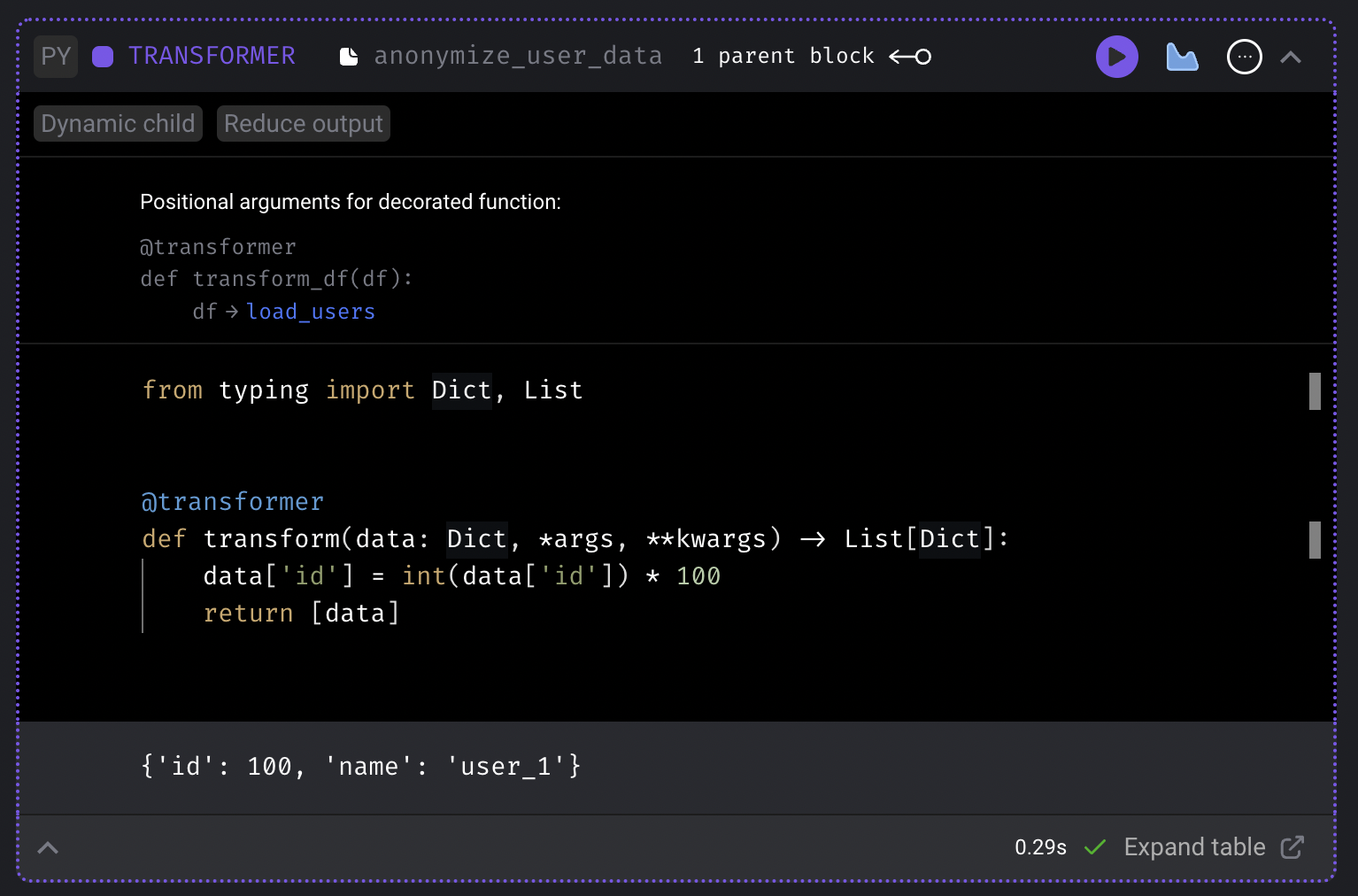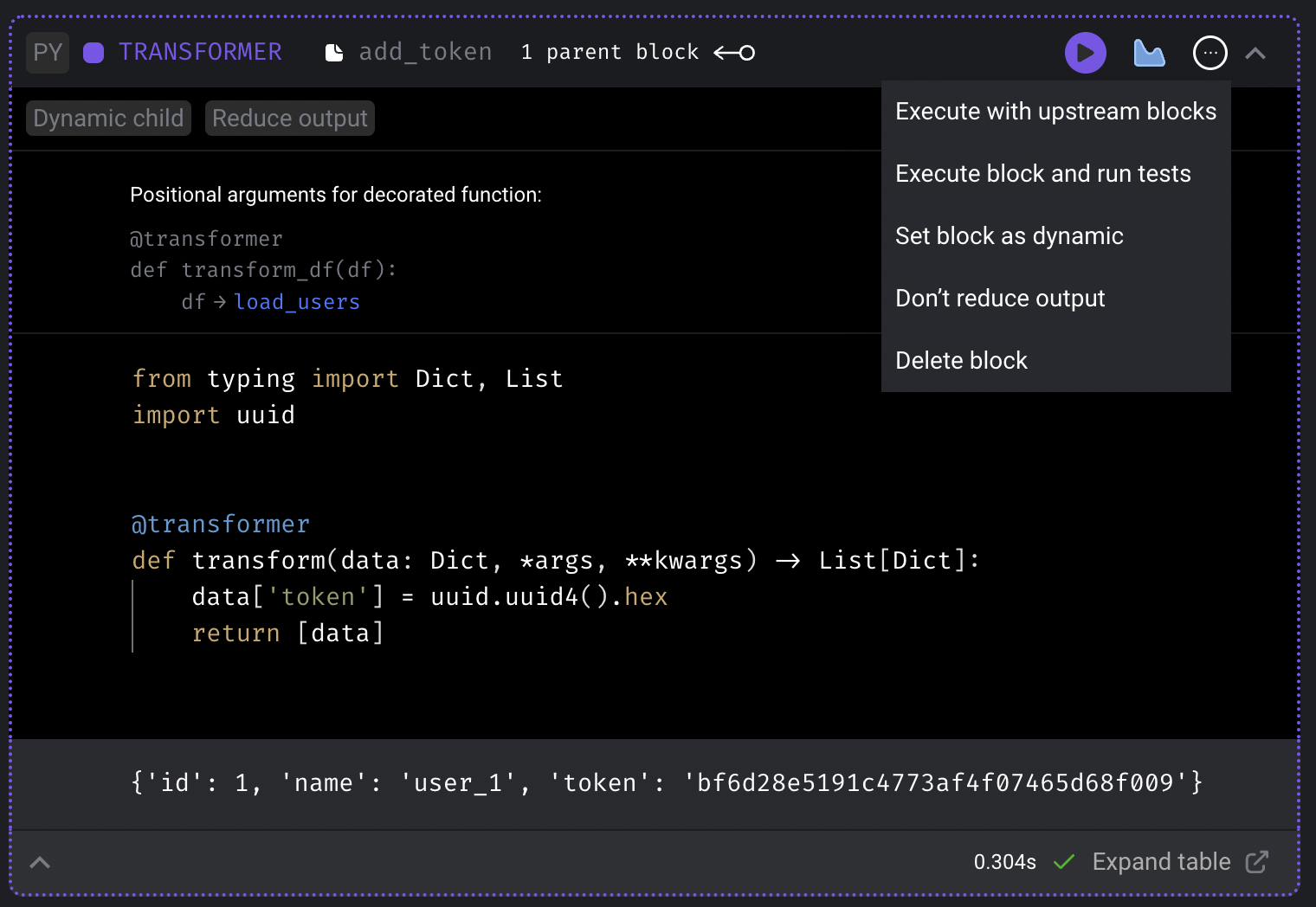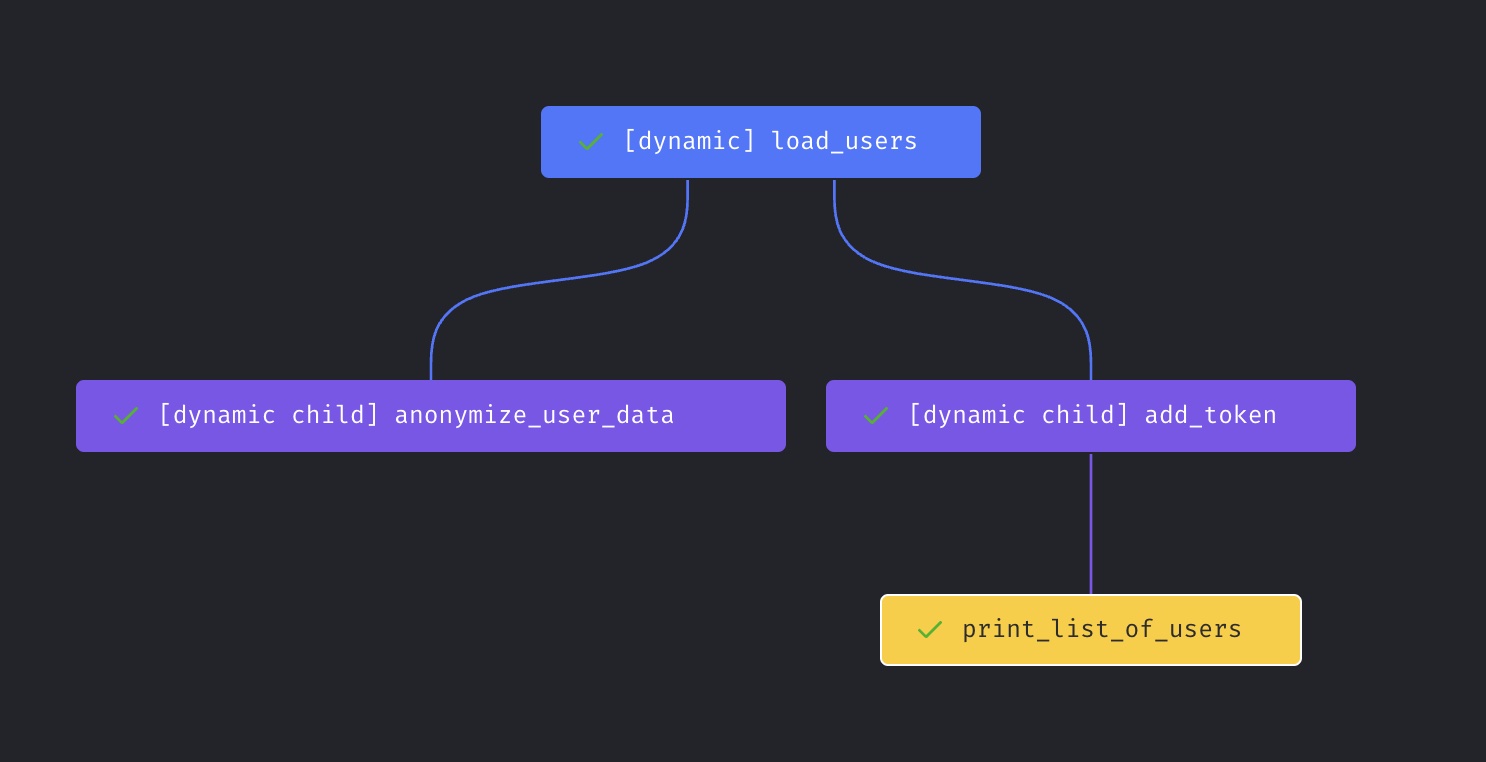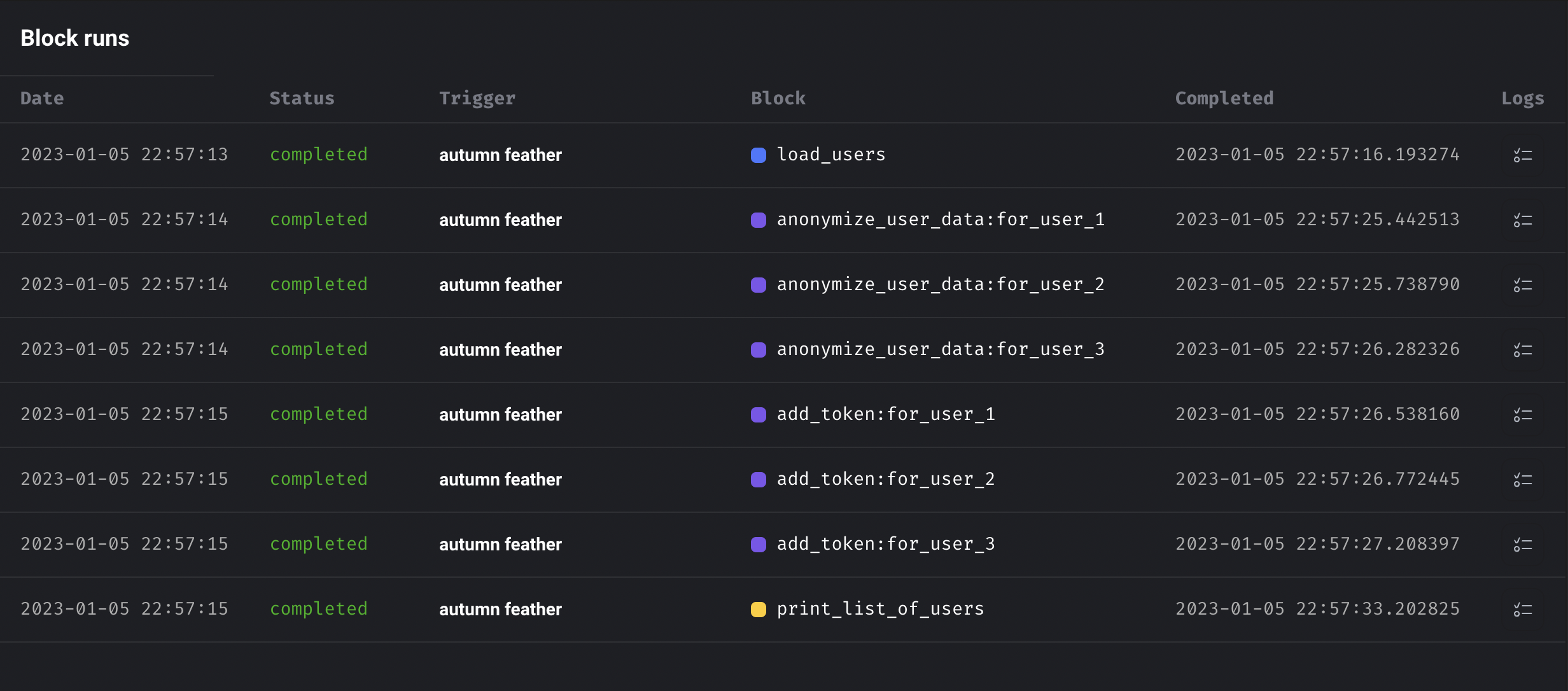Build pipeline
- Add a new data loader block.
-
Paste in the following code:
-
Run the data loader block and the output will be:
-
In the top right corner of the block, click on the triple dot button (
...) and click the dropdown selection labeledSet block as dynamic.
- Add a new transformer block.
-
Paste in the following code:
-
Run the transformer block and the output will be:

- Add another transformer block.
-
Paste in the following code:
- Change the 2nd transformer block’s upstream parent block to only be the data loader. This will require you to remove the existing upstream parent block which is currently pointing to the 1st transformer block.
-
In the top right corner of this 2nd transformer block,
click on the triple dot button (
...) and click the dropdown selection labeledReduce output. -
Run the transformer block and the output should look something like this:

- Add a new data exporter block.
-
Paste in the following code:
-
Run the data exporter block and the output should look something like this:
When executing the entire pipeline, this output will contain 3 items in this list.


Run pipeline
- Click the pipeline name in the top left corner (e.g the breadcrumbs). This will take you to the pipeline’s trigger page.
- Click the button
[Run @once]in the page’s subheader, or create a trigger to run once. - Click the name of the newly created trigger.
- The trigger will create 1 pipeline run with 9 block runs.

Dynamic blocks 2.0
Only in Mage Pro.Try our fully managed solution to access this advanced feature.
Stream mode
Here is a sample scenario to describe the previous and current state:- Dynamic block A returns a list of 10 items and has 1 direct downstream block B.
- B is a dynamic child block and has 2 direct downstream block: C and D.
- C is a dynamic child block and has 1 direct downstream block: D.
- Block A finishes executing and returns an output of 10 items.
- Block B spawns 10 dynamic child blocks.
- Block B executes all 10 dynamic blocks concurrently.
- Once all 10 block runs from block B finishes, block C starts.
- Block C spawns 10 child blocks and executes them.
- Once Block C completes all 10 runs, block D starts.
- Block D spawns 100 child blocks and executes them.
- Block A executes and can be handled in 2 ways:
- Serial: block A executes its code line by line and at the end, the return statement outputs the entire result of 10 items in a list.
- Generator: block A executes its code line by line up until a yield block. Once yield is called, the object that is yielded is stored as an output of block A. In this example, block A would yield 10 times, 1 for each item.
- As soon as 1 output is detected from block A, block B spawns 1 dynamic child that consumes that single output as its input argument.
- As soon as 1 output is detected from block B, block C spawns 1 dynamic child.
- As soon as 1 output is detected from both block B and block C, block D spawns 1 dynamic child.